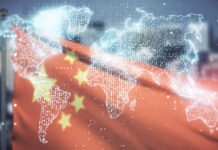Marcos Troyjo is Co-Director of the BRICLab at Columbia University, a special forum on Brazil, Russia, India and China at Columbia’s School of International and Public Affairs (SIPA). He is also founder of the Center for Business Diplomacy, an independent think-tank on global entrepreneurship. Marcos was a speaker at the innovaBRICS & Beyond Conference in London on October 8th 2013, which gathered 220 delegates from 32 emerging markets to debate opportunities and obstacles for investment and growth in emerging markets.
Marcos, in the session titled ‘Engines of Global Recovery’ you emphasised that the rise of BRICs came about because they adapted creatively to a world of deep globalisation. Can you talk about how deep globalisation enabled the ascendant trajectory of BRICs up to 2008?
Deep Globalisation was all about the pursuit of free markets. Free movement of goods, capital and people. It was the most notable “global ecosystem” emerging from the end of the Cold War. I believe two important texts try to capture the essence of Deep Globalisation. One is Francis Fukuyama´s The End of History and the Last Man, the other is Thomas Friedman´s The World is Flat. They both explore the notion that liberal economies and “Made in the World” goods were here to stay. Brazil, Russia, India and China gained a lot from this scenario.
Brazil used the abundant flows of capital to put its economic house in order. India became one of the world´s top destinations for outsourcing – which helped it immensely in promoting jobs in both manufacturing and services. Russia gained from the perspective that it would become a robust market economy – reaping benefits from its comparative advantages in mineral resources to build a tech intensive society. China gained privileged access to some of the most important buying markets of the world. That is to say, BRICs adapted successfully to Deep Globalisation.
You argue that the characteristics of Deep Globalisation have eroded, and been replaced by the risk of Deglobalisation. With nations increasingly pursuing their own interests, how should the BRICs cope with Deglobalisation?
It is true. Deep Globalisation came to a halt with the Great Recession of 2008. Deglobalisation also gave BRICs a good opportunity, for they all implemented in one way or another some kind of state capitalism and countercyclical measures to fight the crisis which worked well. In countries where the state did not have as big a role in the economy as the BRICs, the effects of the Great Recession were more severe.
The problem is to see in Deglobalisation – a world with more protectionism, more restricted flows of goods and services – an ever-lasting scenario in which to place your bets. The future for the BRICS as engines of growth depends on efficiently adapting to the global economy and, more importantly, shaping it. Key to this is how the countries evolve from being successful local content providers towards becoming dynamic hubs of knowledge and innovation. This will demand huge efforts towards transforming these economies – and societies.
We must realise Deglobalisation too is being replaced by a shallower, more limited version of globalisation. I think 2014 marks the end of Deglobalisation and the coming of Reglobalisation. New trade deals, China 2.0, the weakening of state capitalism and a worldwide competition for – and based on – talent will shape the next 20 years. It is this reglobalised scenario that BRICs should take into account when devising their strategy for the future.
You suggest that Reglobalisation will be the stage on which BRICs will have to play out their progress. Can you talk about the characteristics and drivers of Reglobalisation?
As I see it, Reglobalisation will be the outcome of four very important drivers. China´s new economic model, which will be less about exports and investment and more about strengthening the domestic market and focusing on the production of high value-added goods. The trade and investment deals now under negotiation, the Trans-Pacific Partnership (US and some countries of Asia and Latin America) and the Transatlantic Alliance (US and Europe), will also be extremely influential, not only in terms of trade and investment flows, but also on how global production and supply chains are delineated.
Lastly, I see there is a kind of “new age of Talent” dawning. Talent is the most sough-after input of the global economy. And talent is no longer the same as a vocation you are born with. It is rather what you are able to achieve concretely given the volumes of education, science and technology investment a particular society has put forward. The great gap of Reglobalisation will be the talent divide.
You have stated that BRICs must ‘change their DNA’ to become some of the most prosperous nations on the globe. What is the future for investment and innovation in emerging markets? Which areas do you think are most important for BRICs to realise their full potential?
In essence, BRICs must use the incremental resources derived from the comparative advantages in areas like commodities (Brazil and Russia), information technology (India) and overall manufacturing (China), to be diverted to tech-intensive sectors, where the future of the global economy should be. Frankly, right now I believe only China is fully aware of the importance of this process – and China is the only BRIC that has actually started to move in that direction.
It is worth looking into the strategies pursued by each of the BRICs in this regard. Brazil used the abundant flows of capital available in the past decade to implement an industrial policy I like to call “Import Substitution 2.0”. It is the way Brazil found to “reindustrialise” its economy. Since Brazil´s domestic savings as a percentage of GDP has been consistently low in the past 30 years (under 20% of GDP), external capital – flowing freely through Deep Globalisation, was essential to Brazil´s recent rise. So Brazil will try and innovate as of the resources arising from the advantages Brazil enjoys in specific sectors (agro-energy, mining, drilling and extracting of oil offshore, planes, giant bank conglomerates).
China’s map to the future is clear. It wants to be rich and thus powerful. It certainly follows a clear-cut strategy already in place for over 30 years. This helps increase its prestige and power. China will continue to be the manufacturing plant of the industrial world for many years, but China should reduce its emphasis on exports as an engine for growth. It should seek to lower the high ceiling of domestic savings, encouraging its consumers to buy more. Beijing-style Keynesianism will, however, continue to boost investment in what is already quite robust and competitive infrastructure. And China will keep on increasing the share of GDP it invests in Research & Development (R&D). Presumably, by the time China overtakes the US as the world´s largest economy in 2023, it will be directing 2.3% of GDP to R&D which is more than the average investment OECD countries make in innovation.
India wants to be powerful and hence enjoy global prestige. Its competitive edge in most areas still resides in low labor costs (wages) in certain sectors (textiles, outsourcing, information technology). But, unlike China, it has no coherent project for prosperity. Investment will continue to flow from companies wishing to reduce their labor and other production costs by “offshoring” their plant, call-center or web-center operations. Investment will be strong in areas of value-added products, such as chemicals, software and other IT-related industries, but on an insufficient scale to make it boom across all socioeconomic structures. Moreover, capital markets will remain incipient when compared to international counterparts and that will limit funds available for innovative tech start-ups.
Russia wants power, prosperity and prestige, but it is uncertain on how to get it. Sometimes it talks and behaves as a superpower. The population of scientists is immense. The Europeanisation of Russia will represent a tension between conflict and cooperation with countries within its sphere of influence. Tension will ultimately produce positive results for Moscow. At the moment European economies rebalance, investment will flow strongly again from the European Union to Russia (which in reality is the last frontier of Europe). Domestic and international investment will be focused mainly on infrastructure and capital intensive industries. So it is up to Russia to use its incremental resources to further investment in innovation. Perhaps the biggest challenge would be creating a US-style environment for innovation to flourish. But Russia does have the science base for ground breaking start-ups to multiply.
The global economic crisis is a major obstacle to long-term sustainable growth. However, other political, economic and legal issues also have an impact on investment in emerging markets. Can you talk about these roadblocks?
I think reform is a key word for those countries aiming to find their place under the sun in this “post Great Recession” phase we seem to be entering in 2014. “Reform” is the compass guiding the way towards the future in the words of Chancellor Merkel and Prime Minister Cameron. “Revolution” is the best way to describe the reform agenda of Mexican President Peña Nieto since he took office last year. “Great rejuvenation of the Chinese nation” is the guideline for Xi Jinping and the “Chinese Dream” he wants of his country. “Second-Generation Reforms” is how Raghuram Rajan describes the set of liberalising measures he believes India has to enact if it wants further growth.
I believe this focus on reform derives from the perception that the global scenario is really shifting and Reglobalisation will likely offer less opportunities for state capitalism – its impermeability will prove counterproductive. It will be a scenario of even more open global competition, so labour markets – and tax, social security, and ease to do business platforms all have to be adjusted in order to face this new, enhanced global competition.
What more can the BRICs do to exert greater influence upon international relations?
Many steps have been taken since the concept of BRICs first appeared in 2001. But when it comes to the institutional-building process that began in 2009 when the heads of state and ministers of BRICs calendarised their annual Summit meetings, the BRICs is still in its infancy. As a valid category for the analysis of present and future international relations, as well as a relevant political and economic group, BRIC is still a “concept-in-the-making”.
For BRICs to act as a group, allowing for greater internal and external policy cohesion, join forces and thus exert greater influence upon international relations, it will take a lot of work. And that depends heavily on the group making progress in terms of becoming more than just a set of nations that share similar geographical, social and economic statistics – vast territory, large populations, big economies and a great potential to play constructive or fragmentary roles in their geopolitical regions and in the global economy. They must continue to build articulate views and actions in pursuit of their interests and in understanding – and shaping – how the world should work.
What effect do local content policies have on the BRIC economies? Do you think these policies will be altered in the future?
I think there is no doubt BRICs have made “local-contentism” one of the cornerstones of their industrial and trade policies. For BRICs, this worked well for a while to the point of it becoming a recurrent tool in bulking up the capacity to compete in world trade and attract investment. But it carries a heavy price tag. We are experiencing far more than just “currency wars”. Exchange-rate tactics make for ancillary rather than decisive battles. The world has set the stage for the waging of “clashes for competitiveness”.
Many confuse local-contentism with defensive trade measures erected against artificial exchange-rate stratagems that boost the attractiveness of a country’s exports. But there are clear differences between local-contentism and old-school protectionism. While the latter is essentially about import quotas and tariff barriers set up to protect what is “national”, the former idolises foreign direct investment and makes extensive use of government procurements as bait. After all, by its very definition, local-contentism is all about being “local”, not necessarily “national”.
With Reglobalisation and new pluri-lateral trade and investment deals on the horizon, local-content policies will lose much of their appeal and effectiveness. Global production and collaboration networks are on the rise again and therefore BRICs will have to change course.
The 2010 Global Entrepreneurship Monitor report identified Brazil as the most entrepreneurial of the G20 countries. Creativity and entrepreneurship are abundant in Brazil, so why do we not see more tech-intensive, innovative companies? What stands in the way of business-led innovation in Brazil?
I believe the same obstacles that stand in the way of Brazil’s business-led innovation are those blocking Brazil’s road to prosperity. The gulf between universities and firms. Industrial policies that shun foreign competition. An uncompetitive labour legislation that will have you collect 58% of R&D personnel wages in payroll taxes. A tax burden at 36% of GDP wearing innovative companies out. Marketplace complexities that force businesses to hire excess legal and accounting expertise, instead of more engineers and scientists.
It thus seems that Brazil’s poor innovation numbers have less to do with its deficiencies in science or entrepreneurial capacity and more with the microeconomic and institutional straitjackets that make Brazil rank 56th in the latest Global Competitiveness Report. Without enacting long-overdue economic reforms, it will be difficult for Brazil to reap the benefits of the creativity of its people.
Where does Brazil stand in relation to the other BRICs in terms of innovation and technology? President Dilma Rousseff’s government has focused on innovation through Science without Borders, which offers scholarships to Brazilian students to study abroad. Why is it important for Brazil that the distance between academia and market decreases?
It is absolutely imperative that academia and market in Brazil stand closer together. Innovation springs from the interplay of capital, knowledge, entrepreneurial spirit and an innovation-prone ecosystem that catalyses it all. If that is so, for starters Brazil only invests 1% of GDP in Research & Development (R&D). In OECD countries an average of 2.3% of GDP go to R&D. And in Brazil 3/4 of such resources are directed to state-run institutions and research centres, or else are concentrated in the R&D Divisions of Brazil’s commodities giants (where government has a big stake) such as Petrobras and Vale.
Some, like Embrapa (the agriculture R&D institute), do play a key role in driving the competitiveness of Brazil’s agriculture upwards. Yet the bulk of Brazil’s R&D system is mostly devoted to pure science. Regular interaction with businesses are not part of their institutional DNA. The same can be said of most Brazilian public-sector universities, some with highly-praised academic traditions, like USP (the University of São Paulo), which face ideological opposition to building closer ties with companies.
President Dilma Rousseff’s government has been aiming at more innovation by implementing initiatives such as “Science without Borders”. The programme offers 100 thousand scholarships for Brazilian students at both undergraduate and graduate levels to attend universities around the globe. Welcome as it is, the programme barely touches the issue of market-oriented R&D, which requires a much friendlier domestic business environment — that would allow for Brazil-bred technologies to have no borders. As a consequence, Brazil’s “scientific production” continues to expand with more and more articles published in indexed scientific journals.
What are some of the opportunities and obstacles in Brazil’s energy sector that will be important in 2014?
I think the question in everyone´s mind is “where is Petrobras going?”. The Brazilian oil giant is behaving less as a company and more like either a political arm of the Government or a department of industrial policy.
The company finds itself needing to set gasoline and diesel prices on the basis of politics rather than what is demanded by market conditions. The company is importing the gasoline and diesel Brazil needs to supply its rising domestic demand because it has focused too much of its investment capacity in deep water oil, the so-called “pre-salt”, and too little on building new refineries. Politics in Petrobras is hurting the ethanol market in Brazil too.
Since 2014 is an election year in Brazil, one hopes that when the political calendar is gone Petrobras goes back to acting as a “for profit” and “for efficiency” actor. If that is the case, the attractiveness of the energy sector in Brazil will once again be enhanced.
China has overtaken the U.S. as Brazil´s top trading partner. What are Brazil and China doing to improve overall market conditions for growth?
In reality, Brazil-China trade relations are marked by complementarities. Bilateral trade has increased tenfold in the past decade. But that has been mostly the outcome of China’s dramatic infrastructure and consumer market growth – and the ensuing voracious appetite for mineral and agricultural commodities in which Brazil presents clear comparative advantages. One ton of Brazil’s exports to China hover around US$ 200. One ton of Chinese exports to Brazil exceed US$ 2,000. That could hardly be called a “partnership”. Brazil must increase its export of higher value-added goods to China, otherwise bilateral trade will continue to resemble the 18th century commercial exchange between colony and metropolis.
What are the realities and challenges facing Brazil’s growth?
The timid expansion of Brazil’s GDP in the past 3 years deals a hard blow to the notion that its policy makers had devised an economic model uniting high growth with social inclusion. That sweet dream is over. It is wrong to assume that the set of policies Brazil has put in place in the past few years to boost its economy and upgrade its social data are pillars of a new development model.
What does exist in Brazil, stretching back beyond current President Dilma Roussef and her predecessor Luiz Inácio Lula da Silva (2003-2010), is a cyclical attempt to promote growth that constitutes a “pattern”. It is based on the appetite of Brazil’s domestic market for high levels of consumption. The pattern has indeed been accompanied in the past 11 years by income distribution mechanisms that lifted the lives of millions. They are however targeted at poverty alleviation – not increasing productivity – and therefore are not engines for sustained development over time. This pattern made Brazil fall in love with the present. It is time to end this affair. We have to go back to being the “country of the future”.
Committing to – and thoroughly enacting – labour, tax and social security reforms will represent making the future triumph over the present. If Brazil reforms, the country does have an extraordinary potential and may indeed become the world´s fourth largest economy in the next couple of decades.
About the Author
Marcos Troyjo is co-founder and co-director of BRICLab at Columbia University, a special forum on Brazil, Russia, India and China, where he teaches international affairs. He is an op-ed columnist for Folha de S. Paulo, Brazil´s biggest circulation newspaper, and a regular commentator for print and electronic media outlets in Brazil and around the world, including CNN, Financial Times and GloboNews. He also founded the Center for Business Diplomacy, an independent think-tank on global entrepreneurship. Professor Troyjo holds a PhD in sociology of international relations from the University of São Paulo and pursued postdoctoral studies at Columbia University. An economist and political scientist, he is an alumnus of The Rio Branco Institute, Brazil´s diplomatic academy, and undertook additional graduate studies at Harvard University’s Kennedy School of Government. Professor Troyjo is a lecturer in the graduate programs at IBMEC University, a Visiting Scholar at the Centre d’Études sur l’Actuel et le Quotidien, Université Paris Descartes (Sorbonne), and a member of the International Schumpeter Society.
Professor Troyjo worked as a career diplomat and was Press Secretary at the Brazilian Mission to the United Nations in New York and Chief of Staff of the Science and Technology Department of Brazil’s Ministry of Foreign Affairs. He serves on the Advisory Board of numerous for profit as well as not-for-profit institutions. was chosen as one of “The Outstanding Young Persons of the World – TOYP” by the Junior Chamber International in 2004, and the winner of the “Latin America Fellowship-2005” awarded by the Rt. Hon Helen Clark, former Prime Minister of New Zealand. He is the author of books on economic development and global affairs, including Trading Nation: Power & Prosperity in the 21st Century (listed by Americas Quarterly as one of the best new books on policy, economics and business in the hemisphere in 2007).




































































